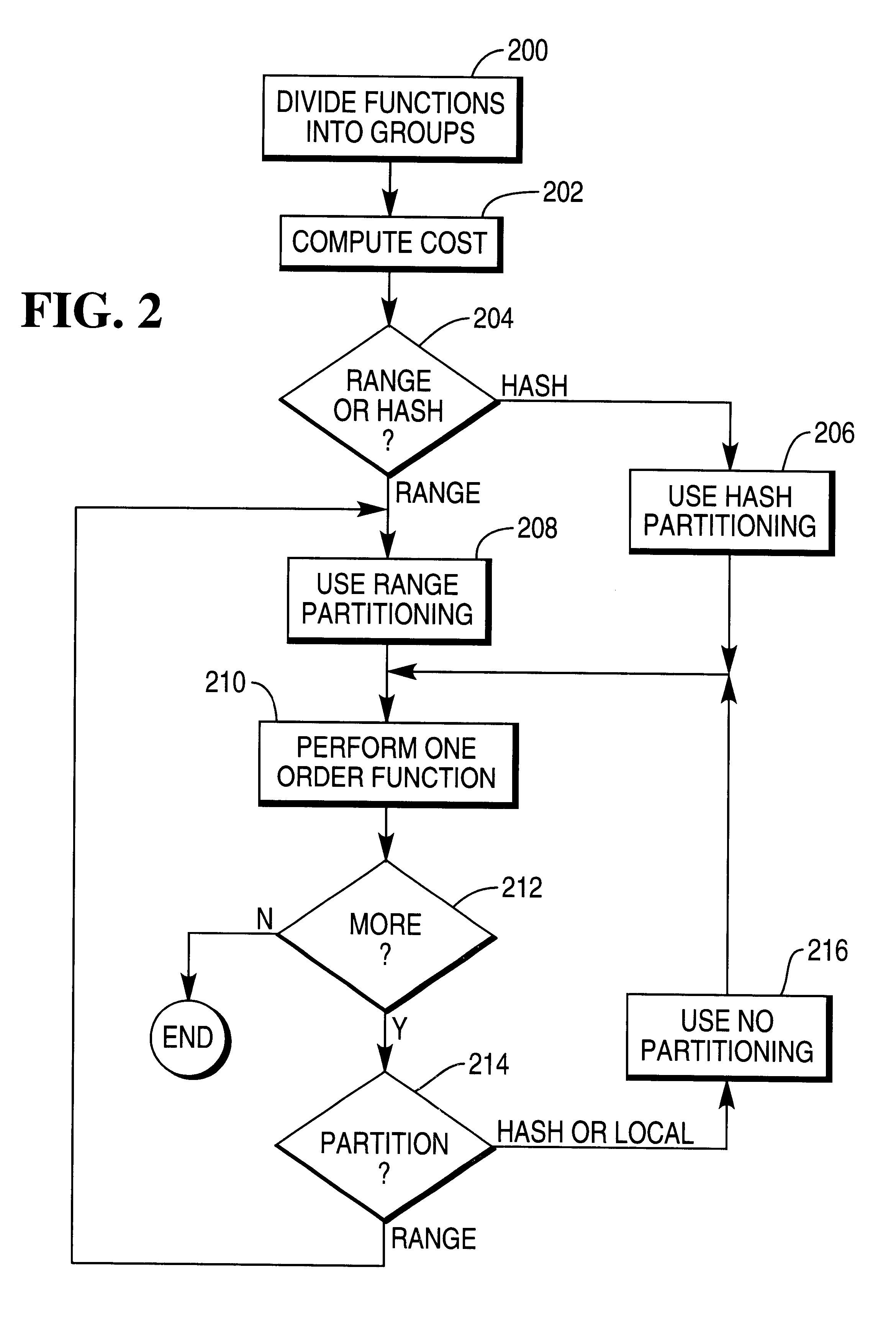Computing multiple order-based functions in a parallel processing database system
a database system and function technology, applied in the field of database management systems, can solve problems such as waste of resources, prior art techniques that do not take advantage of the functionality of rdbms, and problems such as the inability to parallelize and use parallel processing database systems, and achieve the effect of reducing the number of concurrent processing databases
- Summary
- Abstract
- Description
- Claims
- Application Information
AI Technical Summary
Problems solved by technology
Method used
Image
Examples
Embodiment Construction
The preferred embodiment of the present invention performs order-based analysis functions in a parallel processing computer system 100. A function request is specified for a given set of parameters that vary depending on the function, but which always include the order-specification. For example, a Rank function only requires an order-specification, while a Moving Average function requires an expression for which the moving average is being computed, the size of the moving window, and the order-specification.
The function requests may specify that rows from one or more tables in the database 118 be grouped by one or more grouping expressions. Each group, defined by the grouping expression and comprising rows that have the same value, then defines the scope for the computation of the function. In the absence of a grouping specification, the scope of the function comprises the entire table.
The order-based analysis function are then performed in two phases: (1) an analysis phase and (2)...
PUM
 Login to View More
Login to View More Abstract
Description
Claims
Application Information
 Login to View More
Login to View More - Generate Ideas
- Intellectual Property
- Life Sciences
- Materials
- Tech Scout
- Unparalleled Data Quality
- Higher Quality Content
- 60% Fewer Hallucinations
Browse by: Latest US Patents, China's latest patents, Technical Efficacy Thesaurus, Application Domain, Technology Topic, Popular Technical Reports.
© 2025 PatSnap. All rights reserved.Legal|Privacy policy|Modern Slavery Act Transparency Statement|Sitemap|About US| Contact US: help@patsnap.com



